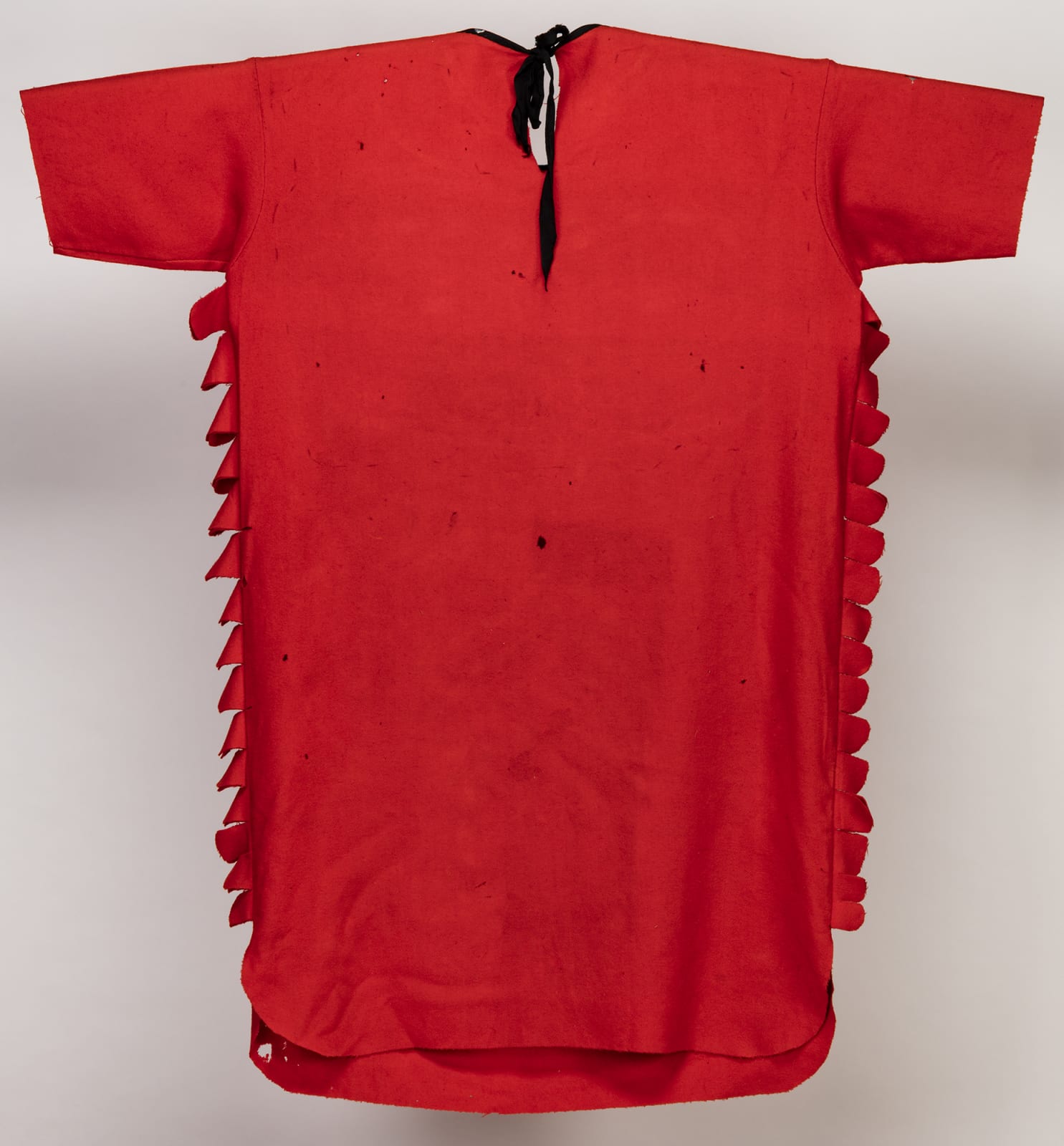UNIDENTIFIED ARTIST, KAIGANI HAIDA
LOT 76
ESTIMATE: $6,000 — $9,000
Many different types of trade cloth regalia were developed on the Northwest Coast, based in general on a long-standing tradition of hide garments that were painted and/or beaded or quilled upon, some with sewn-on shell pieces. Chilkat woven shirts and tunics were also made with all-Native materials that set a precedent for trade cloth garments. Trade cloth sources include Hudson’s Bay blankets, Melton cloth, and what is known as stroud cloth, woven in wool and vat-dyed an orange-red color. Stroud cloth was traded widely across North America by the HBC and was incorporated into the fabric arts of Native groups from the Plains to the west coast. Other sources of red wool were also used for Northwest Coast regalia.
Cloth regalia ranged from garments in blanket or robe form to sewn overshirts and sleeveless tunics. Blankets were used for regalia from northern Vancouver Island to Southeast Alaska, with local variations in decoration (shell or button applique, cloth applique in contrasting color) and border styles. Shirts and tunics were decorated with the same range of techniques incorporating shell pieces (abalone and mother of pearl), commercial buttons of MOP, and applique in contrasting color, usually red on dark blue, with some examples using green or grey as the base fabric.
This short-sleeved tunic is tailored in red trade cloth with a beaver design composed of MOP buttons to outline the design forms. Abalone shell rim-plaques are sewn in certain design areas for added emphasis; within ovoids, eyebrows, incisor teeth, rib spaces and surrounding the beaver’s tail. The sides are embellished with added red strips cut into rounded scallop shapes that decorate the sides of the shirt. The neckline is covered with seam tape that may have been added more recently to protect the cut edges from wear.
Dancers wearing robes or tunics also wear varieties of headgear that vary with the traditions of the region, the status of the dancers and the performance enacted. Such dancers usually wear gloves or gauntlets of moose or deer hide decorated with beadwork, often leggings of trade cloth similarly embellished, and hide moccasins sewn in a wide range of styles and decoration.
Steven C. Brown
Provenance
By descent to Sylvester Peele (1921-1996), Hydaburg, AK;Sylvester Peele was a descendant of Chief Soni-hat (1829-1912), an important and wealthy chief of Kasaan (Kasa’aan), one of the main historical communities of the Kaigani Haida, situated on east-central Prince of Wales Island, Alaska. Acquired from the above in Hydaburg by a BC Collector in 1970; Acquired from the above by the present Private Collection, BC.
Join our mailing list
* denotes required fields
We will process the personal data you have supplied in accordance with our privacy policy (available on request). You can unsubscribe or change your preferences at any time by clicking the link in our emails.




